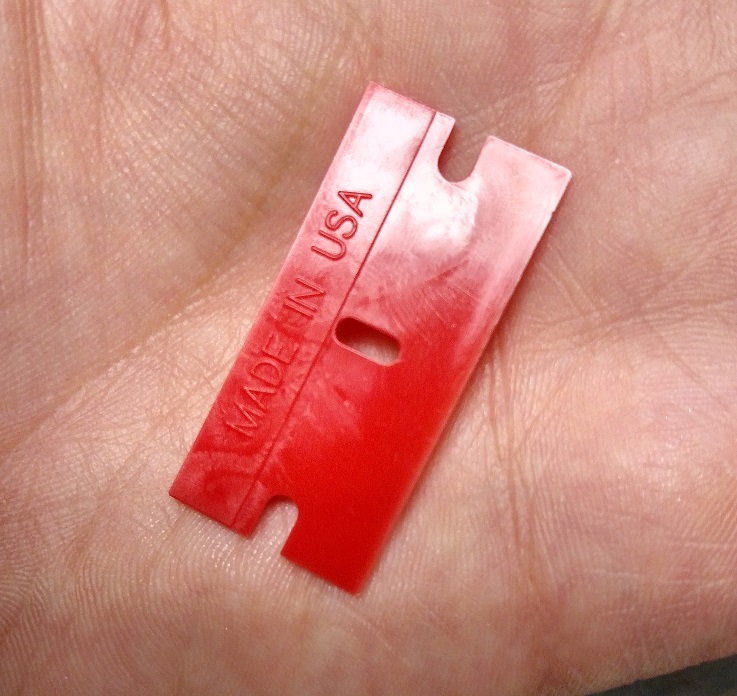Knowing how to wrench on motorcycles necessitates a working knowledge of all of the bike’s systems, of course. Depending on the job you’re doing, that knowledge might need to be pretty deep. And you’re better off having worked on anything at all, since there are a lot of tricks and know-how that save you from making pretty big mistakes.
Like: Always put your oil drain plug back in with a torque wrench, until you’re comfortable with the “feel” of the 16 ft/lbs it takes. Never replace spark plugs on an engine that isn’t stone cold. You can boil the fork oil out of those soaked brake pads, but when they’re $20/pair you really should replace them.
And: The right tool for the job always makes things easier. Sometimes, the right tool for the job is the difference between the possible and “time to trailer it to the shop.”
One fun thing I learned about recently: Plastic Razor Blades. You’d think (as I did) “what the hell good is a plastic razor blade?” But oh, dear reader, they are magic.
Got sticker residue or pine sap on a painted surface? Of course you do; we all do. Metal razor blades are great for removing sticker residue and pine sap from glass, but they are also very, very good at scraping paint down to the metal. No bueno. Let me tell you this: use your plastic blade to scrape the pine sap first, then hit it with isopropyl alcohol (on a microfiber cloth, not a paper towel!) to dissolve it. For sticker residue, loosen it with isopropyl first, then scrape off the goo with the plastic blade. It won’t scratch your paint, I promise. Wash these surfaces afterwards, and wax them with good wax (I like Zymol, but use whatever warms your heart; the important part is that you wax the paint after scrubbing with alcohol!)
Because single-blade razor blades have been around approximately since the Bronze age, there exist infinite handles that fit this form factor. Search the internet for the handle of your choice, or buy one from a local hardware or big-box store.

Another great (if dangerous) tool I was recently introduced to: a Hose Removal Tool. Now, you’re thinking, I’ve seen those; they’re small and work great for fuel lines and breather hoses. Gracious no, not those little pliers. We all have those (and indeed, they are often the Right Tool For the Job.) I am referring to the stuck coolant hose, which requires this thing
. Yes, it is quite dangerous to use; you can injure yourself grievously with one; I don’t have to describe it because I’m sure your imagination will do just fine. But, and we’ve all been there, when you are arguing with a coolant hose which hasn’t moved in 20 years, and you don’t want to destroy the hose in the removal process, this tool will get you there in a jiffy. Just… be careful.

Last in this installment: We all have circlip pliers, right? Yes, you can live without them. No, you don’t particularly want to, when they make removing and installing circlips this much of a breeze. But imagine a lock ring, with no circlip (this is what you will find inside, say, the starter assembly in an early-to-mid-2000s BMW oilhead). Having struggled with that particular lock ring during my annual starter rebuild and impaled myself on one too many flathead screwdrivers attempting removal, I’ll say: if you encounter lock rings in your life, get the Lock Ring Pliers
.


